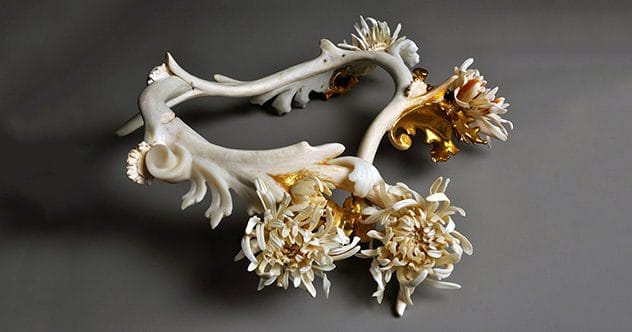Every pile of bones whispers a story, a fragment of history waiting to be pieced together. Some tales are chilling, like walls built from human legs in Belgium. Others are simply baffling. Join us as we delve into the world’s most peculiar bone collections, unearthing stories of ancient predators, forgotten warriors, and discoveries that rewrite what we thought we knew about the past. Prepare to be amazed, and perhaps a little creeped out!
10 Astonishingly Preserved Ancient Penguin Bones
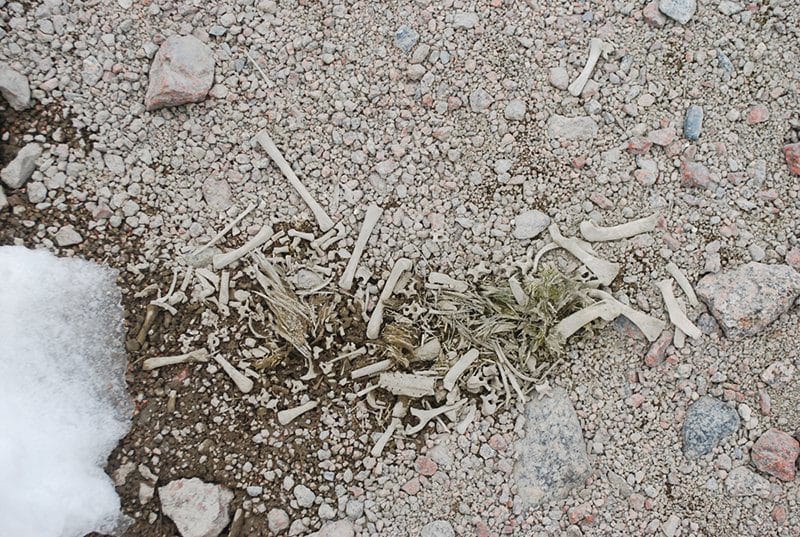
Picture this: you find penguin bones in Antarctica. They look very fresh, like the penguin died recently. But then you learn they’re incredibly old – centuries, or even millennia! This surprising discovery happened to scientists in 2020 at Cape Irizar. Penguins hadn’t nested there since the early 1900s, so these fresh-looking remains were a real puzzle.
It turned out these bones and even whole bodies were at least 800 years old. Some were estimated to be as ancient as 15,000 years! Over many years, countless Adélie penguins used this spot. Many bones collected as penguins died naturally. Some were frozen solid and were so well-kept by the ice that they fooled the scientists. Changes in ice cover slowly revealed these amazing time capsules, giving us a peek into an ancient penguin world.
9 The Graveyard of Giant Lemurs
Today’s lemurs are mostly small, charming creatures. But travel back about 2,000 years, and you’d meet lemurs the size of gorillas! These giants are now extinct, but in 2015, divers made an incredible find in an underwater cave in Madagascar: a massive graveyard filled with their bones. Among the remains were hundreds of giant lemur skeletons.
What made this discovery truly special was not just the sheer number of lemurs found, but also how well-preserved they were. Often, fossils are scattered or very incomplete – maybe just a skull or a few ribs. Here, however, some lemur skeletons were almost perfectly whole. This gave researchers an amazing, unprecedented look into the anatomy of these magnificent, long-lost primates.
8 Jennifer Trask’s Ethereal Antler Art
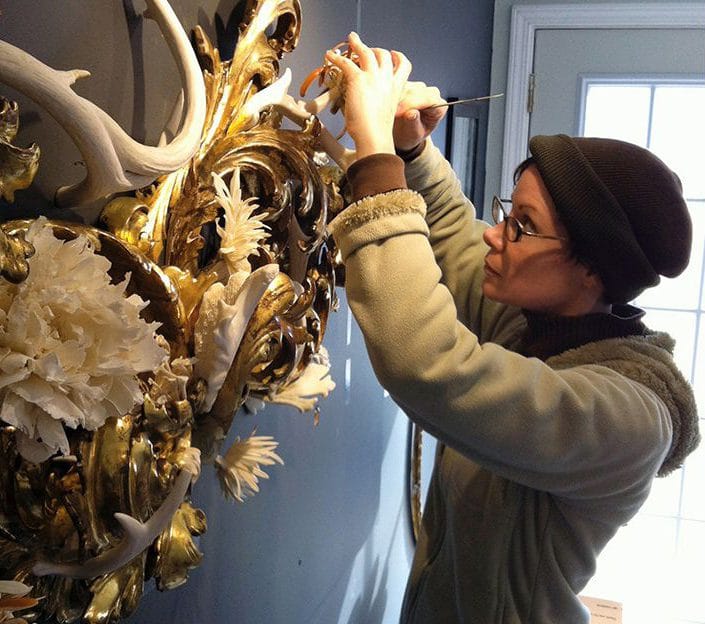
In 2016, visitors to Washington, D.C.’s Renwick Gallery were captivated by the unique creations of Jennifer Trask. Though it might have been a first encounter for many, Trask has been crafting her signature, beautiful art for over two decades. Her choice of materials, however, might make some a bit uneasy.
Trask uses blood, precious metals, and, most prominently, bone. Her artwork incorporates skeletal remains from a surprising variety of animals: deer, snakes, giraffes, camels, chickens, and more. She uses everything from teeth and ribs to vertebrae and antlers. While it sounds like it could be gory, her work is anything but. It possesses a delicate, baroque beauty that appeals to many art lovers. Her pieces range from large, ornate wall decorations to tiny bones so skillfully arranged they look like real, fragile flower petals.
7 The Enormous Whale Bone Warehouse

Hidden away in Los Angeles is an unassuming warehouse with an extraordinary collection. Inside, you’ll find over 5,000 whale and dolphin skeletons, plus countless jars filled with organs and other biological samples. This vast hoard belongs to the Natural History Museum of Los Angeles County and is the second-largest collection of its kind in the world. Only the Smithsonian boasts more whale bones.
You might wonder why a museum would gather thousands of bones if they don’t plan to display them all. Well, having many examples from the same species helps researchers learn much more about them. Another crucial role of this warehouse is to help solve the mystery of why marine mammals sometimes die in large numbers without a clear reason. That’s also why any dead dolphins and whales found in the region are brought here for careful study.
6 Ancient Humans’ Clever “Canned Food”
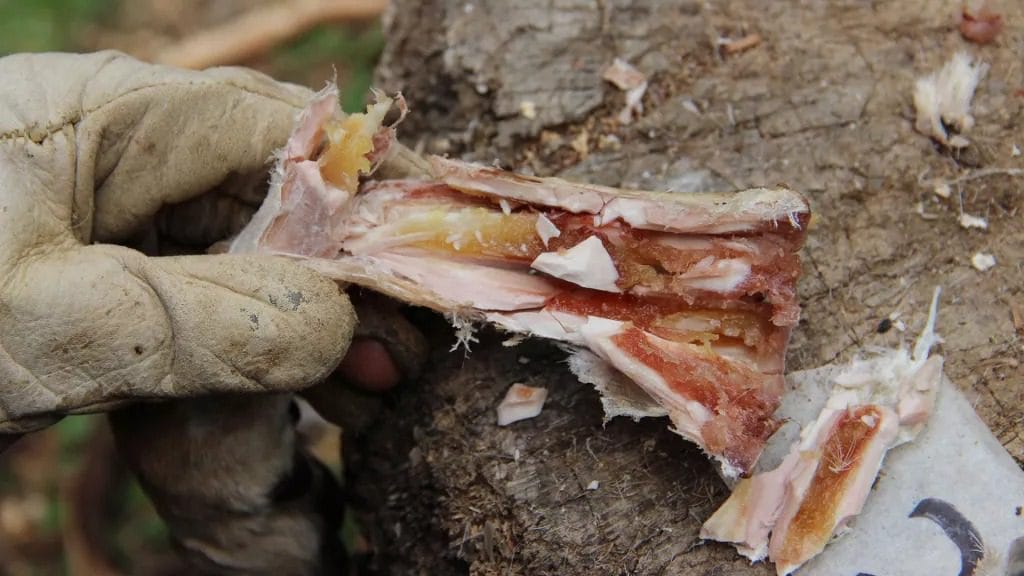
Hundreds of thousands of years ago, refrigerators were obviously not around. Because of this, scientists long assumed that after a successful hunt, ancient people ate every part of an animal very quickly. But a 2019 discovery at Qesem Cave near Tel Aviv changed this view dramatically.
Among around 80,000 animal bones found in the cave, researchers discovered evidence of an ingenious food preservation method. Ancient humans would wrap the leg bones of deer in the animal’s own skin. Their goal? To preserve the nutritious marrow inside for later consumption – a kind of prehistoric “canned food.” Amazingly, when modern researchers replicated this technique, they found that wrapping bones in deerskin kept the marrow fresh and full of nutrients for several weeks!
5 An Ice Age House Made of Mammoth Bones
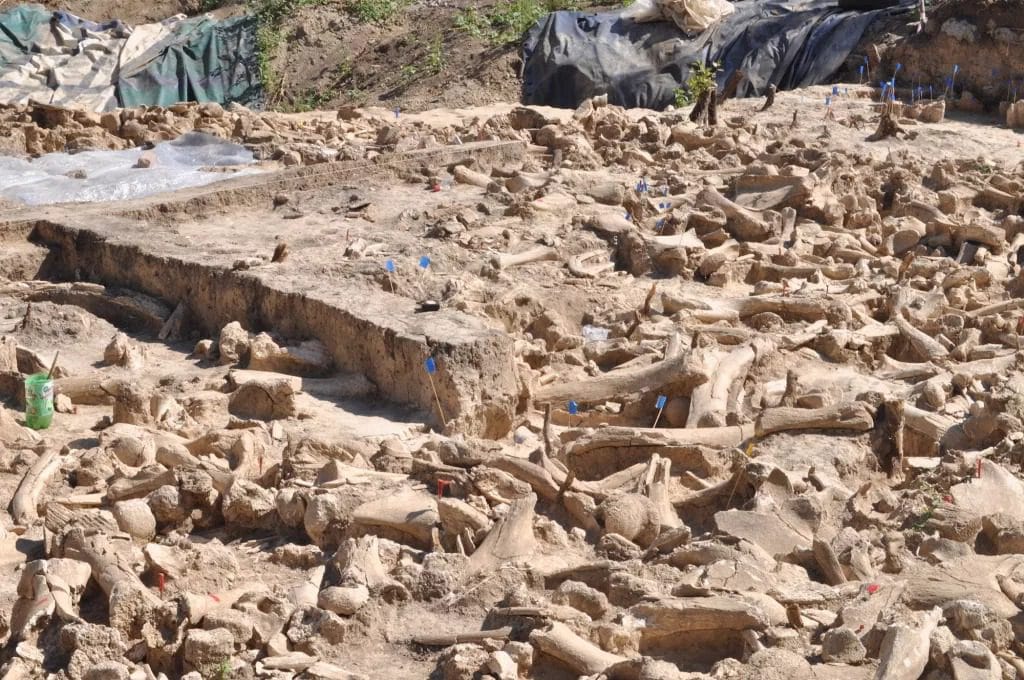
In 2020, a truly massive collection of bones was unearthed in Russia. Dating back roughly 20,000 years to the Ice Age, this wasn’t a natural accumulation. The bones were clearly arranged by humans to build some kind of structure. Whether it was a home, a storage place, or perhaps a temple, remains a fascinating mystery.
What’s left today is a large circle of bones, about 36 feet (11 meters) across. The builders used bones from at least 60 mammoths, along with remains from other animals like foxes, horses, bears, wolves, and reindeer. One of the strangest aspects of this discovery was that it seems the community built this structure while meat was still attached to some of the bones. The smell must have been overwhelming! While this might not seem like the best building practice, it apparently served its purpose, as around 70 similar mysterious bone structures from the same era have been found across Russia and Ukraine.
4 Belgium’s Mysterious Walls of Human Bones
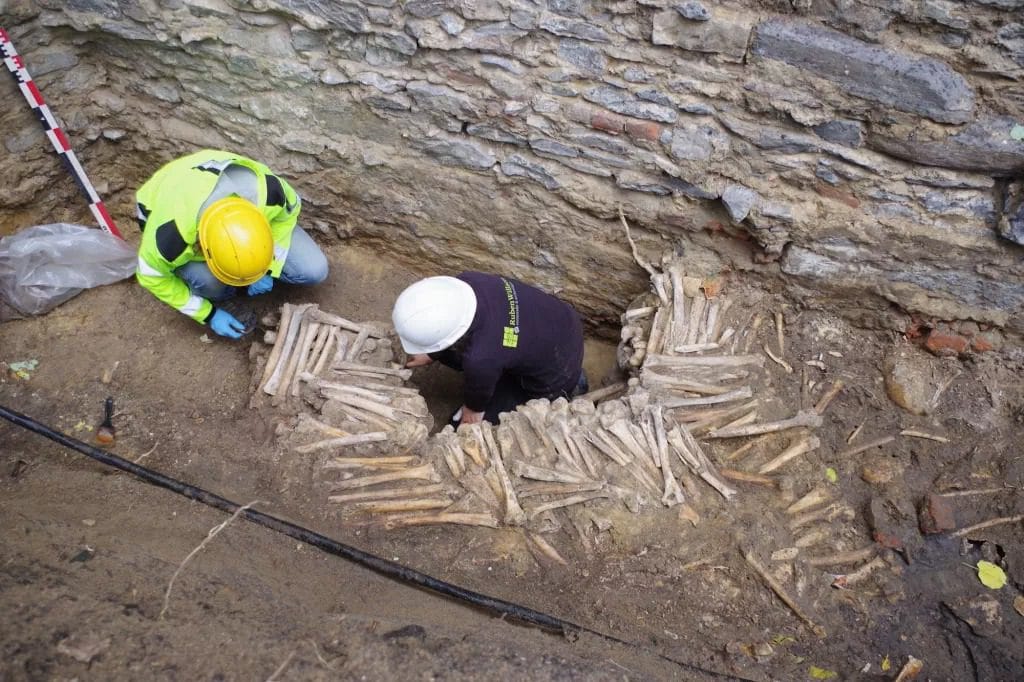
Ancient people certainly loved building walls. They kept enemies out and livestock in. But a series of nine walls discovered in Belgium were unlike anything experts had seen before in that country. Instead of using typical materials like bricks or stone, these walls were made by carefully stacking human shin and thigh bones.
Interestingly, no smaller bones like those from hands, feet, or even spines were found in the walls themselves. There were also no bones from children. However, the site did yield other human remains. The pathways between these bone walls were filled with skulls, many of which had been shattered. It’s thought that the nearby Saint Bavo’s Cathedral emptied its graveyard twice after the 16th century. But why they chose to build these walls with the dead, instead of using a more traditional ossuary (a special building for bones), is still a puzzle. No other human bone walls exist in Belgium to offer clues.
3 The Hyena’s Horrifying Bone Stockpile
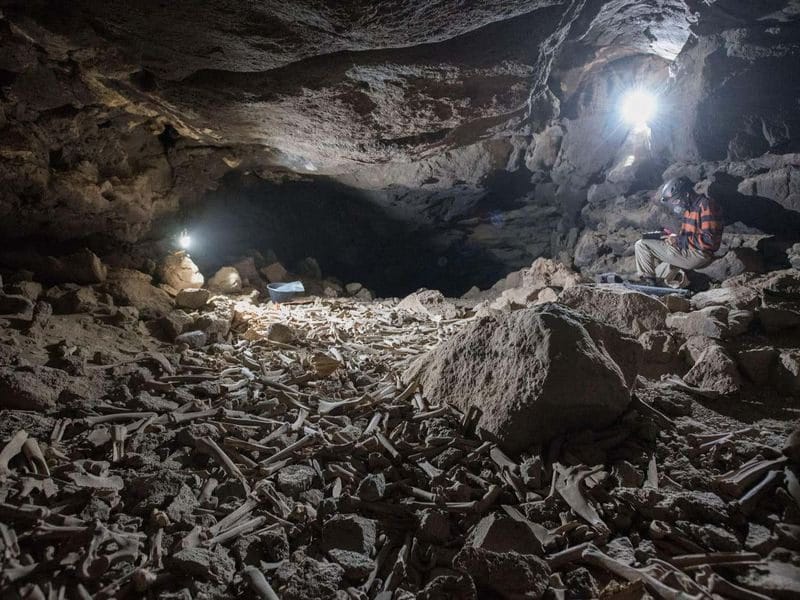
In Saudi Arabia, there’s a cave with a floor that looks like something from a nightmare. As far as you can see, it’s carpeted with bones, packed tightly together. These aren’t just a few bones – there are thousands of them! They belong to a mix of humans, camels, horses, and about ten other species.
Fortunately, this isn’t the work of some ancient monster or crazed killer. In 2021, experts studied tooth marks on the bones and realized what was going on. For thousands of years, hyenas have been using this cave as a den and a place to stockpile the remains of their meals. It’s possible these spotted carnivores are still using the cave as their pantry. In the early 2000s, people who tried to enter the site quickly turned back after hearing what sounded like hyena snarls from within!
2 A Sparkling Herd of Opalized Dinosaurs

The story of how Australia found its first dinosaur herd is quite remarkable. Back in the 1980s, a man named Bob Foster was working at an opal mine in New South Wales. He and other miners kept finding unusual stones that looked a bit like horse hooves.
While the other miners would smash these strange rocks looking for valuable opal veins, Foster started to get curious. Why did all these stones have such a similar shape? His gut feeling told him they might be destroying something precious. So, he collected two bags of these “hooves” and took them to a local museum. He was absolutely right! Not only did the bones belong to a new species of plant-eating dinosaur, but Foster had discovered an entire herd. One dinosaur skeleton was nearly complete, making it the world’s most complete opalized dinosaur. And those “hooves”? They were actually the toe bones of these ancient creatures, beautifully preserved in opal.
1 A Chilling Post-Battle Ritual in Ancient Denmark
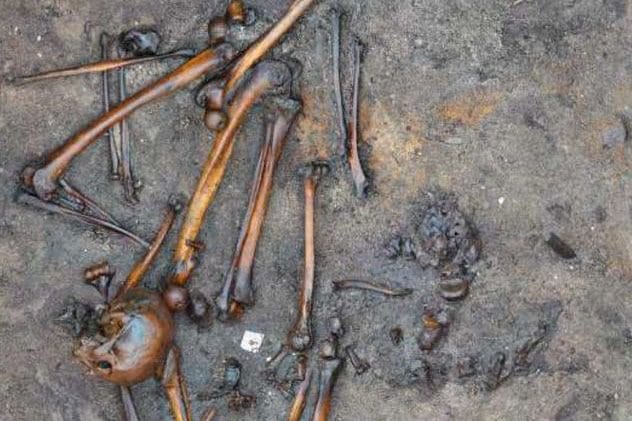
About 2,000 years ago, a field in Denmark known as Alken Enge was the site of a brutal battle. This discovery provided the earliest evidence of large-scale conflict in that region. But the thousands of bones found there also told a grim story about what happened *after* the fighting stopped – specifically, what the victors did to the vanquished.
Hundreds of warriors died at Alken Enge, and their bodies were, in a way, abandoned right there on the battlefield. Instead of receiving any kind of burial, their corpses were left exposed to animals and the weather for up to a year. After this period, their remains were systematically processed. Bodies were chopped up, bones were scraped clean, and sometimes, similar types of bones (like pelvises) were strung together on sticks. Skulls were often crushed. Finally, most of these treated remains were thrown into a nearby lake as part of a mysterious and disturbing ritual.
These bone collections, each bizarre in its own way, offer fascinating glimpses into the past. They remind us that history is not just about dates and famous names, but also about the everyday lives, strange customs, and incredible creatures that have shaped our world. From icy plains to deep caves, these skeletal stories continue to unfold.
What do you think is the most bizarre bone collection on this list? Do you know of any others? Leave your comment below and share your thoughts!


